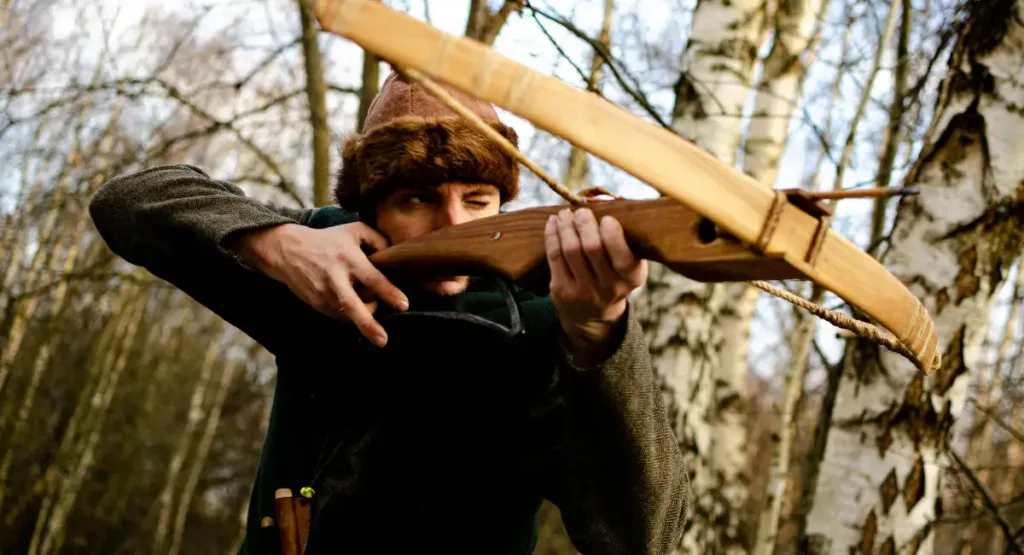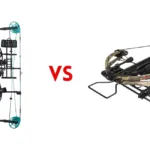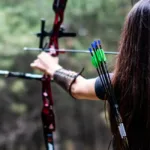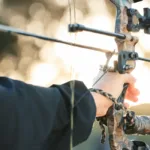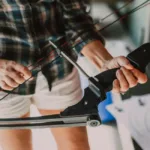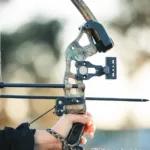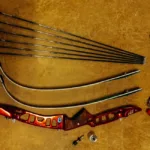Crossbows are a captivating blend of tradition and modern technology—a timeless weapon updated for the 21st century. The accuracy, power, and stealth of crossbows have made them popular among archery enthusiasts, outdoor sports enthusiasts, and hunters alike. The most common question, however, is how far a crossbow can shoot.
Here, we will explore “How Far Can A Crossbow Shoot” and the factors that determine crossbow range, provide practical tips for maximizing your shooting distance, and look at the differences between various types of crossbows.
Understanding the Crossbow Range
The effective shooting distance of a crossbow can vary widely depending on several critical factors. These include the crossbow’s type, its draw weight and speed, its arrow’s weight and type, and its scope. Remember that a crossbow’s range is more accurately measured by the distance over which it can send an arrow with smooth and accurate flight.
Different Types of Crossbows
A crossbow can be divided into several types, from the traditional recurve to the modern reverse-draw model. Due to design differences, each type has different ranges. The recurve crossbow is known for its simplicity and reliability, but it has a shorter range than the compound crossbow. Compound crossbows, on the other hand, usually have a flatter trajectory, which increases their effectiveness.
Key Components That Affect Range
In order to determine how far a crossbow can shoot, the following components must be considered:
- Draw Weight and Speed: Higher draw weights result in faster arrows that cover more distance.
- Arrow Weight and Type: The type and weight of the arrow have a significant effect on its velocity and range.
- Scope of Quality: High-quality scopes not only increase accuracy, but also allow for a better distance gauge for long-range shooting.
Factors Influencing Crossbow Range
Crossbows have specific range capabilities due to a number of factors.
Draw Weight and Speed
A crossbow’s draw weight is the force needed to pull back the string. Modern crossbows can have draw weights exceeding 200 pounds, resulting in arrow speeds exceeding 400 feet per second (FPS), affecting their distance. This directly influences the speed at which the arrows are launched.
Arrows for weight and type
Having the right weight for an arrow is important, as a weightier arrow will pack more punch with greater kinetic energy, but it won’t travel as far. Bolts and arrows made for speed will travel farther, though they would be lighter.
Quality Scope
In order to shoot accurately at long ranges, a scope becomes more than just an aiming tool. High-quality scopes should feature reticles calibrated for arrow speeds and distances.
Practical applications
There is a wide range of applications for crossbows, from hunting to target shooting, and the effective range varies widely depending on the situation.
Scenarios for hunting
There are several important factors to consider when learning crossbow range, both legally and ethically. Regulations may dictate minimum draw weights and arrow speeds, but ethical hunting demands understanding the effective range.
Target Shooting Competitions
Increasing effective shooting distances requires a thorough understanding of crossbow setup and shooting technique. Distance can be an indicator of skill, and competitors push distance boundaries.
Safety considerations
You should always put safety first when using a crossbow, no matter how far you are shooting. This is especially true when shooting at long distances, where the arrow may be airborne for several seconds. Always have a safe backstop and never shoot beyond your equipment or your abilities.
Tips for Maximizing Range
It is possible to extend the range of your crossbow with the right knowledge and technique.
Tips for maintenance and tuning
The regular maintenance of your crossbow is important to making sure that all of its components are in good working order, which directly impacts its range and accuracy. Tuning includes checking the string, cables, limbs, and cams (if applicable), as well as making sure everything is aligned properly.
Proper shooting techniques
There is a great deal of skill and technique involved in the shooting of crossbows. Proper stance, grip, drawing and releasing are all parts of consistent and accurate crossbow shooting. At long distances, even the tiniest error can lead to a significant miss, or, more importantly, an unethical shot at the game.
Final words – How Far Can A Crossbow Shoot
Crossbow range is one of the most important factors affecting the weapon’s suitability for various purposes, and is a topic of intense interest to anyone interested in the subject. You can maximize the range of your crossbow on the range or in the field by understanding the factors that influence range and employing the right techniques.
You should always consider safety as your top priority when playing sports or using any tool, and never take range or a shot for granted. Happy shooting, and may your arrows fly true within your crossbow’s ethical range! Stay tuned for more crossbow advice and gear reviews.
Recent Posts
- The Ultimate Guide To Choosing Between Compound Bow vs Crossbow
- How To Carry A Bow – Tips & Techniques For Archers
- Ultimate Guide To Installing Compound Bow Arrow Rest
- The Ultimate Guide To The Best Archery Brands Of Compound Bows
- How To Utilize Recurve Bow Sights: A Comprehensive Guide
- The Archer’s Craft: Understanding Parts Of Recurve Bow

